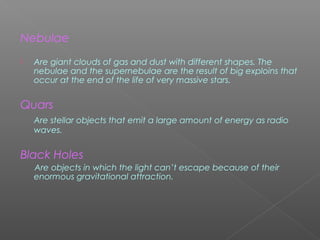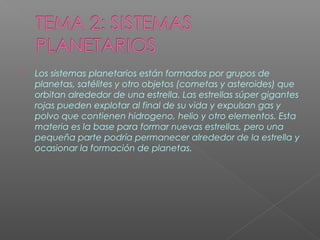The document discusses the origin and evolution of the universe from the Big Bang to the present day. It describes how the universe began in a hot, dense state and has been expanding and cooling ever since. As it expanded, the first atomic nuclei formed via nuclear fusion. Over time, these atoms gathered together through gravity to form structures like galaxies, stars, and planets. The document also examines different astronomical objects like nebulae, quasars, and black holes that can be observed in the universe.













